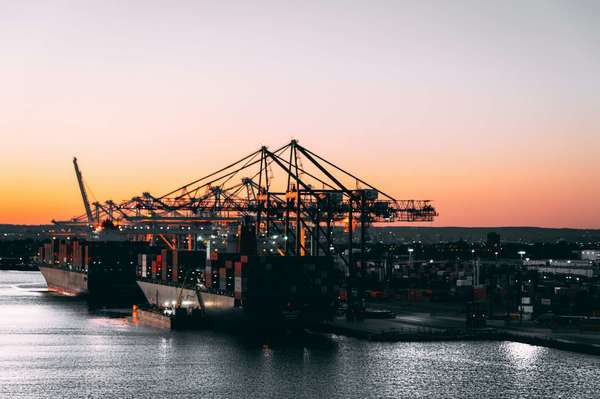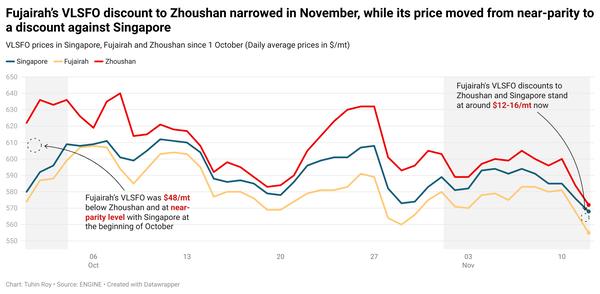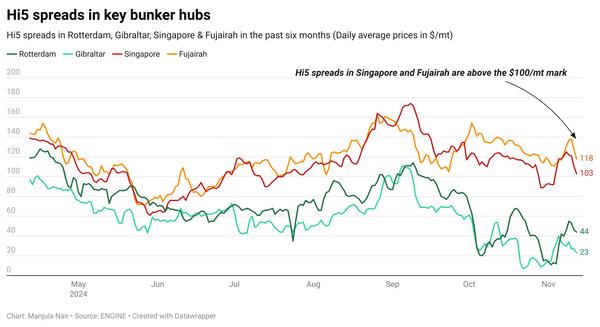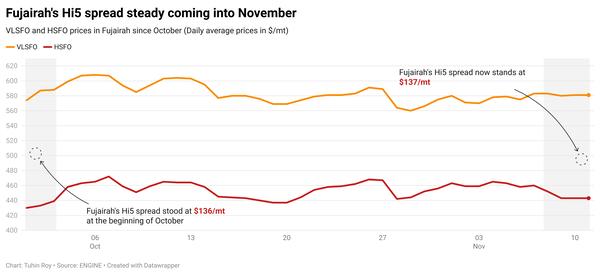East of Suez Market Update 8 Nov 2024
Bunker prices in the East of Suez ports have moved in mixed directions, and VLSFO supply is stable across Japanese ports.
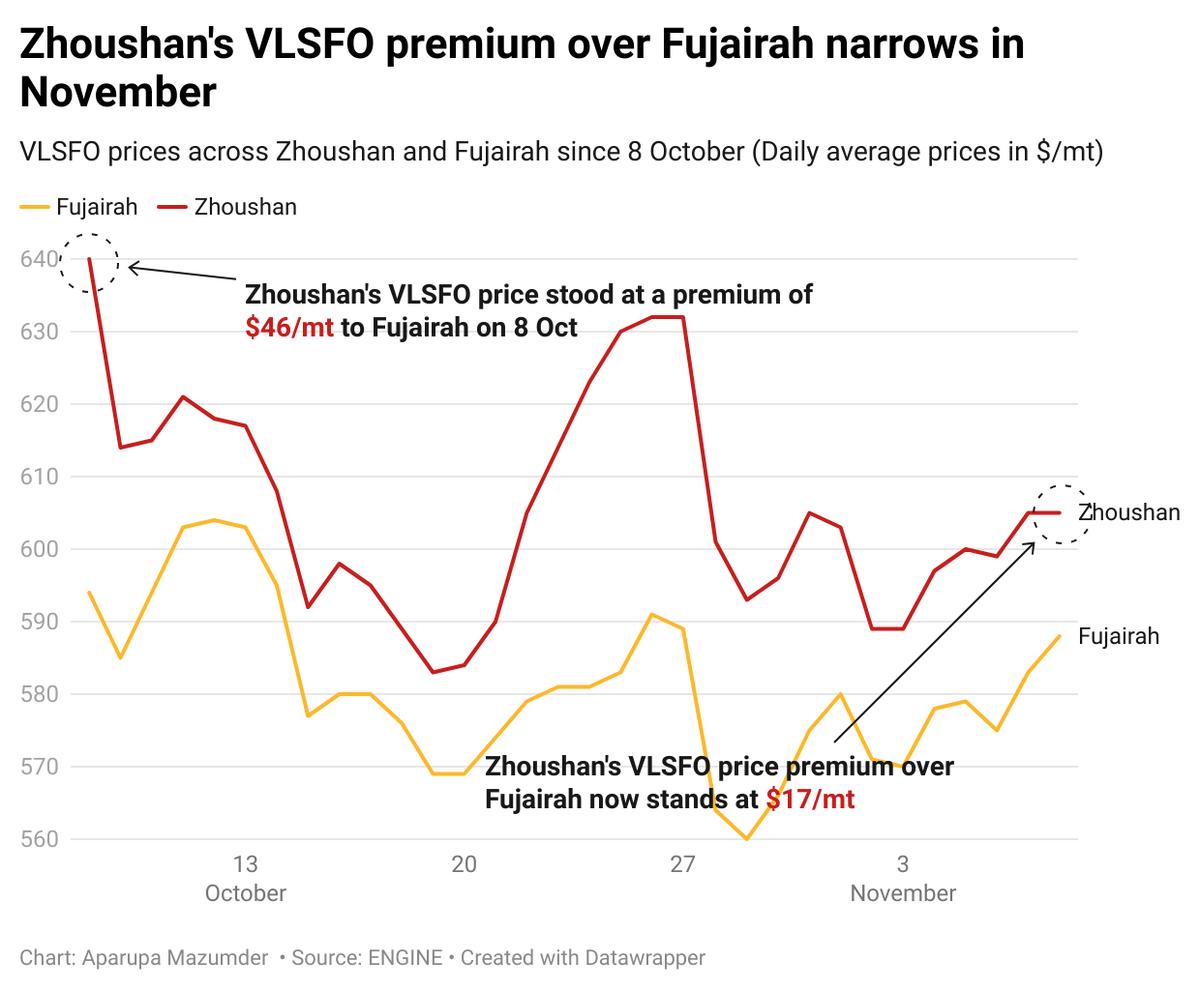
Changes on the day, to 17.00 SGT (09.00 GMT) today:
- VLSFO prices up in Fujairah ($7/mt) and Singapore ($2/mt), and down in Zhoushan ($2/mt)
- LSMGO prices up in Zhoushan (3/mt) and Singapore ($1/mt), and down in Fujairah ($1/mt)
- HSFO prices up in Zhoushan ($1/mt), unchanged in Fujairah, and down in Singapore ($7/mt)
VLSFO benchmarks in East of Suez ports have inched up. In UAE’s Fujairah port, VLSFO price has risen by $7/mt, marking the highest increase among the three major Asian bunker ports. Despite the rise, Fujairah’s VLSFO is currently at a $17/mt discount to Zhoushan’s.
Moving to Northern China, VLSFO and LSMGO supply is ample in Dalian and Qingdao, though HSFO is limited in Qingdao. LSMGO is readily available in Shanghai, while VLSFO and HSFO remain relatively tight.
There is a good supply of VLSFO and LSMGO in South Korean ports, with recommended lead times of 4-12 days, the same as last week. HSFO availability is tight, with lead times of 8-12 days.
Bunker operations in Ulsan, Onsan, Busan, and Yeosu ports will face weather disruptions from 8-10 November, a source confirmed.
VLSFO availability is good in all major Japanese ports, except in Oita. LSMGO is promptly available at major ports, including Tokyo, Chiba, Yokohama, Kawasaki, Osaka, Kobe, Sakai, Nagoya, Yokkaichi, Mizushima, and Oita.
Brent
The front-month ICE Brent contract has lost $0.36/bbl on the day, to trade at $74.51/bbl at 09.00 GMT.
Upward pressure:
Donald Trump’s victory in the 47th US Presidential Election has put some upward pressure on Brent’s price as market participants focus on oil supply risks.
Oil investors are trying to price in the implications of Trump’s government on policy changes and geopolitical relations, especially with Iran. The Republican candidate’s “tough stance” on Iran, which could impose severe sanctions on the country could damper oil supply, pushing Brent’s price up.
“The Iran sanctions tail risk—a clear sign the market is still weighing the impact. Trump’s policies could simultaneously fuel and temper oil prices, and much will depend on how his administration plays the sanctions,” SPI Asset Management’s managing partner Stephen Innes wrote.
Brent’s price found more support after the US Federal Reserve (Fed) cut its key interest rate for the second time in 2024.
In a largely anticipated move, the US Federal Open Market Committee (FOMC) cut its key interest rate by 25 basis points, bringing the central bank’s benchmark rate to a range between 4.50 - 4.75%.
Lower interest rates in the US may boost oil demand and support prices.
Downward pressure:
Brent’s price felt downward pressure as supply concerns related to Hurricane Rafael eased.
The US National Hurricane Center has said that Hurricane Rafael is expected to move slowly westward over the US Gulf of Mexico and away from US offshore oil fields. It is expected to weaken over the weekend.
Besides, weekly US crude stock data saw a rise and curtailed Brent’s price gains. Commercial crude oil inventories in the US rose by 2.15 million bbls to touch 428 million bbls for the week ending 1 November, according to the US Energy Information Administration (EIA).
“The weekly oil inventories for the week were less than inspiring,” Price Futures Group’s senior market analyst Phil Flynn said.
By Aparupa Mazumder
Please get in touch with comments or additional info to news@engine.online

Contact our Experts
With 50+ traders in 12 offices around the world, our team is available 24/7 to support you in your energy procurement needs.

